A New Study (published In PLOS Biology) investigated How Bats Make Sharp Turns In The Air, Particularly
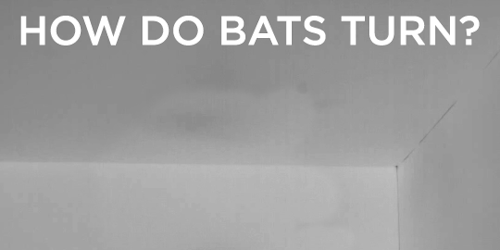
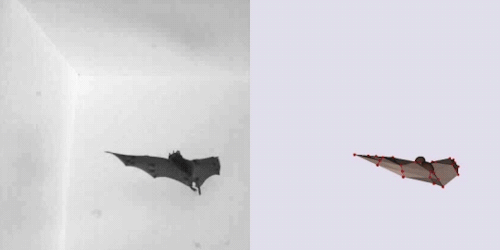

A new study (published in PLOS Biology) investigated how bats make sharp turns in the air, particularly when they have to grab the ceiling. It turns out aerodynamics have very little to do with it - it’s all about inertia. Just as a figure skater clutches his arms to his chest to increase his speed, bats pull in their wings to help them make turns.
You can read all about it (and see more video) in this piece by my friend Nsikan Akpan over at PBS Newshour.
More Posts from Curiositytherover and Others
So i was carrying a chemical that was 12 on the pH scale and it fell
I guess you could say I dropped the base
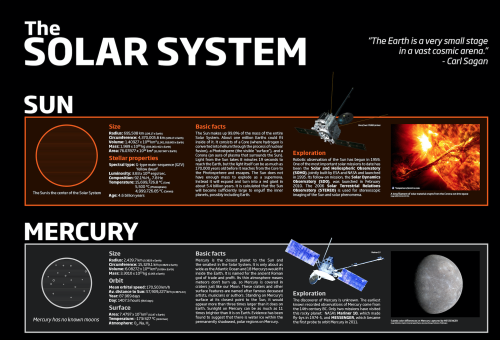
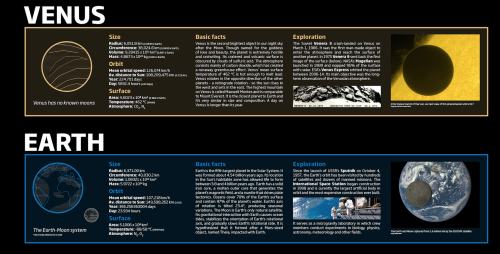
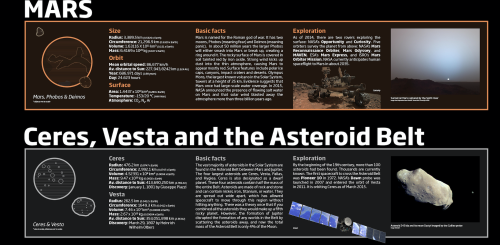
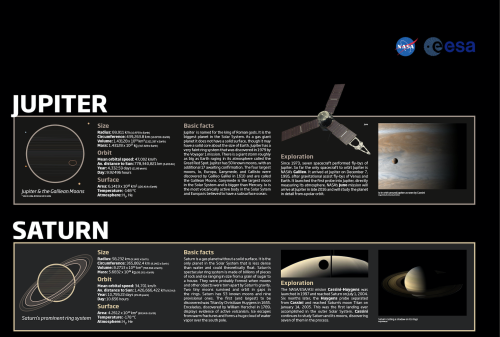
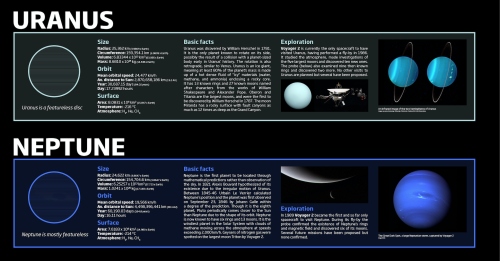
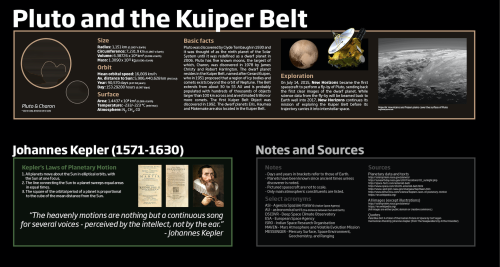
The Solar System

Scientists Grow Vocal Cord Tissue in a Lab for the First Time, and It Produces Sound
Scientists in the University of Wisconsin-Madison have successfully grown functional vocal cord tissue in a laboratory - yes, vocal cords that work. This remarkable new tissue engineering technique could, someday, be used to restore the voices of patients who have certain voice disorders that are (at the present junctures) untreatable.
Read more at: http://futurism.com/links/scientists-grow-vocal-cord-tissue-in-a-lab-for-the-first-time-and-it-produces-sound/

Congress Instructs NASA to Build a Space Habitat by 2018
Some of NASA’s successes in 2015 include finding liquid water on Mars and icy mountains on Pluto. In fact, the agency has been making so much waves that the US Congress has decided to give it a raise.
However, there’s a catch.
http://futurism.com/links/congress-instructs-nasa-build-space-habitat-2018/

Sky-piercing towers, Hyperloop transports, driverless cars, and 3D-printed buildings. Welcome to Dubai, the City of the Future.

“Space Train” Concept Could Get Humans to Mars in Two Days, If Only It Would Work










Reid Wiseman is a national treasure. There are 46 more of these.

Rosemary Johnson was a promising violinist and member of the Welsh National Opera Orchestra when she was involved in a devastating car crash 27 years ago. The accident left her in a coma for seven months, and the resulting brain damage has robbed her of most of her ability to talk and move.
But thanks to new software that reads people’s brain waves, Johnson has been able to compose music for the first time since 1988, and has had the chance to have it played to her in real time by a professional string quartet.
“It was really very moving,” Eduardo Miranda from the Interdisciplinary Centre for Computer Music Research at Plymouth University in the UK, told The Telegraph.

Kim Goodsell was running along a mountain trail when her left ankle began turning inward, unbidden. A few weeks later she started having trouble lifting her feet properly near the end of her runs, and her toes would scuff the ground. Her back started to ache, and then her joints too.
This was in 2002, and Kim, then 44 years old, was already an accomplished endurance athlete. She cycled, ran, climbed and skied through the Rockies for hours every day, and was a veteran of Ironman triathlons. She’d always been the strong one in her family. When she was four, she would let her teenage uncles stand on her stomach as a party trick. In high school, she was an accomplished gymnast and an ardent cyclist. By college, she was running the equivalent of a half marathon on most days. It wasn’t that she was much of a competitor, exactly – passing someone in a race felt more deflating than energising. Mostly Kim just wanted to be moving.
So when her limbs started glitching, she did what high-level athletes do, what she had always done: she pushed through. But in the summer of 2010, years of gradually worsening symptoms gave way to weeks of spectacular collapse. Kim was about to head to Lake Superior with her husband. They planned to camp, kayak, and disappear from the world for as long as they could catch enough fish to eat. But in the days before their scheduled departure, she could not grip a pen or a fork, much less a paddle. Instead of a lakeside tent, she found herself at the Mayo Clinic in Rochester, Minnesota.
Continue Reading.

What a way to spend Christmas!
-
 naminelily reblogged this · 1 month ago
naminelily reblogged this · 1 month ago -
 volcanoesmeltmedown liked this · 2 months ago
volcanoesmeltmedown liked this · 2 months ago -
 johannacantsing reblogged this · 2 months ago
johannacantsing reblogged this · 2 months ago -
 naminelily liked this · 2 months ago
naminelily liked this · 2 months ago -
 sinosijak liked this · 2 months ago
sinosijak liked this · 2 months ago -
 sleepwalk-living reblogged this · 2 months ago
sleepwalk-living reblogged this · 2 months ago -
 captaindeinony liked this · 2 months ago
captaindeinony liked this · 2 months ago -
 somereferenceforme reblogged this · 2 months ago
somereferenceforme reblogged this · 2 months ago -
 human-dlc liked this · 2 months ago
human-dlc liked this · 2 months ago -
 corvidscorpse reblogged this · 2 months ago
corvidscorpse reblogged this · 2 months ago -
 foetidofferings liked this · 2 months ago
foetidofferings liked this · 2 months ago -
 lovelyrainbowkitsune reblogged this · 2 months ago
lovelyrainbowkitsune reblogged this · 2 months ago -
 lovelyrainbowkitsune liked this · 2 months ago
lovelyrainbowkitsune liked this · 2 months ago -
 worm-moon-eclipse reblogged this · 2 months ago
worm-moon-eclipse reblogged this · 2 months ago -
 royalarchive2 reblogged this · 3 months ago
royalarchive2 reblogged this · 3 months ago -
 reactingcaptain reblogged this · 3 months ago
reactingcaptain reblogged this · 3 months ago -
 ittybittydovahkiin reblogged this · 3 months ago
ittybittydovahkiin reblogged this · 3 months ago -
 meowxfs liked this · 3 months ago
meowxfs liked this · 3 months ago -
 theblobmaster reblogged this · 3 months ago
theblobmaster reblogged this · 3 months ago -
 sabinmoon reblogged this · 3 months ago
sabinmoon reblogged this · 3 months ago -
 pokesposts reblogged this · 3 months ago
pokesposts reblogged this · 3 months ago -
 ohangleplease reblogged this · 3 months ago
ohangleplease reblogged this · 3 months ago -
 qkili liked this · 3 months ago
qkili liked this · 3 months ago -
 mloramagica reblogged this · 3 months ago
mloramagica reblogged this · 3 months ago -
 leavethisbrokenmanbehind reblogged this · 3 months ago
leavethisbrokenmanbehind reblogged this · 3 months ago -
 leavethisbrokenmanbehind liked this · 3 months ago
leavethisbrokenmanbehind liked this · 3 months ago -
 silvergryphonart reblogged this · 3 months ago
silvergryphonart reblogged this · 3 months ago -
 irrational-pie liked this · 3 months ago
irrational-pie liked this · 3 months ago -
 the-night-wizard reblogged this · 3 months ago
the-night-wizard reblogged this · 3 months ago -
 haunteds-thing liked this · 3 months ago
haunteds-thing liked this · 3 months ago -
 elwon reblogged this · 3 months ago
elwon reblogged this · 3 months ago -
 ruensroad liked this · 3 months ago
ruensroad liked this · 3 months ago -
 paradoxmimzy liked this · 3 months ago
paradoxmimzy liked this · 3 months ago -
 paradoxmimzy reblogged this · 3 months ago
paradoxmimzy reblogged this · 3 months ago -
 f-e-tana reblogged this · 3 months ago
f-e-tana reblogged this · 3 months ago -
 f-e-tana liked this · 3 months ago
f-e-tana liked this · 3 months ago -
 wisemilkaddict liked this · 3 months ago
wisemilkaddict liked this · 3 months ago -
 pinkiepiebones liked this · 3 months ago
pinkiepiebones liked this · 3 months ago -
 not-7-nurglings-in-a-trenchcoat liked this · 3 months ago
not-7-nurglings-in-a-trenchcoat liked this · 3 months ago -
 ur-bi-southern-queen reblogged this · 3 months ago
ur-bi-southern-queen reblogged this · 3 months ago -
 janzoo liked this · 3 months ago
janzoo liked this · 3 months ago -
 emathevampire reblogged this · 3 months ago
emathevampire reblogged this · 3 months ago -
 hyperbunny94 reblogged this · 3 months ago
hyperbunny94 reblogged this · 3 months ago -
 mellohicatt liked this · 3 months ago
mellohicatt liked this · 3 months ago -
 ace-aro-agender liked this · 3 months ago
ace-aro-agender liked this · 3 months ago -
 markcat reblogged this · 3 months ago
markcat reblogged this · 3 months ago -
 bitemebymary reblogged this · 3 months ago
bitemebymary reblogged this · 3 months ago -
 bitemebymary liked this · 3 months ago
bitemebymary liked this · 3 months ago